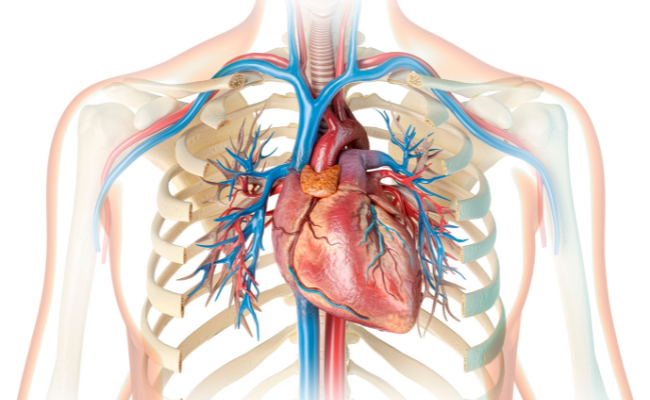How to Treat Takayasu Arteritis?
- December 18, 2023
- No Comments

What is Takayasu Arteritis?
Takayasu Arteritis (TA) is an uncommon form of vasculitis, marked by inflammation in major arteries such as the aorta and its branches. These arteries, responsible for delivering oxygenated blood from the heart to various body tissues, can experience damage and inflammation, leading to complications like aneurysms, narrowed vessels, or complete blockage. Despite its rarity, TA affects individuals of any age, gender, or ethnicity, with a higher prevalence in women of Asian descent under the age of 40.
In essence, Takayasu Arteritis is a complex autoimmune disorder that intricately impacts large blood vessels, demanding attention to its unique manifestations and a tailored approach to treatment.
Why Does Takayasu Arteritis Occur?
The precise cause of Takayasu Arteritis remains elusive, but it is generally classified as an autoimmune disorder. In autoimmune conditions, the immune system erroneously targets the body's own tissues, resulting in inflammation and subsequent damage. In TA, the immune system turns its attention to the arterial walls, inducing thickening, narrowing, and sometimes scar tissue formation. This compromised state can impede blood flow to various organs and tissues, leading to an array of symptoms.
How Does Takayasu Arteritis Present Itself?
The clinical presentation of Takayasu Arteritis is diverse, with symptoms contingent on the affected blood vessels. Early signs may include fatigue, muscle and joint pain, fever, and unintended weight loss. As the disease advances, individuals might experience diminished or absent pulses, chest pain, and high blood pressure. The severity of these symptoms varies, underscoring the importance of early detection for effective management.
Treatment Solutions for Takayasu Arteritis
Effectively managing Takayasu Arteritis involves a multifaceted approach aimed at suppressing inflammation, alleviating symptoms, and averting complications. The following are key components of the treatment plan:
- Immunosuppressive Medications: Central to the treatment of Takayasu Arteritis is the use of immunosuppressive medications. Corticosteroids, such as prednisone, are frequently prescribed to curb inflammation. However, the long-term use of corticosteroids can entail side effects, prompting the consideration of other immunosuppressive drugs like methotrexate or azathioprine either in conjunction or as alternative therapies.
- Biologic Therapies: In cases where conventional treatments prove insufficient, or when severe symptoms persist, biologic therapies become a viable option. These therapies, including tumor necrosis factor (TNF) inhibitors, target specific pathways involved in the inflammatory process. This targeted approach offers the potential for efficacy with fewer side effects compared to traditional immunosuppressants.
- Blood Pressure Management: Given the propensity of Takayasu Arteritis to induce high blood pressure, antihypertensive medications are commonly prescribed. These medications play a crucial role in regulating blood pressure and mitigating the strain on affected arteries.
- Lifestyle Modifications: In tandem with medical interventions, adopting a healthy lifestyle is paramount for individuals with Takayasu Arteritis. This encompasses maintaining a balanced diet, engaging in regular physical activity (taking individual limitations into account), and abstaining from tobacco use. These lifestyle adjustments contribute not only to overall well-being but also complement medical treatments.
Benefit Points of Treating Takayasu Arteritis
- Improved Quality of Life: A paramount goal of treating Takayasu Arteritis is the substantial enhancement of the patient's quality of life. By mitigating inflammation and managing symptoms effectively, individuals experience relief from pain, fatigue, and other debilitating effects, fostering an overall sense of well-being.
- Prevention of Complications: Timely and appropriate treatment plays a pivotal role in preventing complications associated with Takayasu Arteritis. Complications may range from organ damage due to compromised blood flow to the formation of aneurysms and an increased risk of stroke. Addressing the underlying inflammation is instrumental in minimizing these potentially serious risks.
- Long-Term Management: Given that Takayasu Arteritis is a chronic condition, long-term management is indispensable. Consistent medical follow-ups, adherence to prescribed medications, and the integration of lifestyle modifications contribute to sustained control of the disease and a more favorable prognosis.
- Individualized Approach: Takayasu Arteritis necessitates an individualized approach to treatment. Healthcare providers work closely with patients to tailor treatment plans, adjusting medications and interventions based on the response to therapy and any emerging challenges. This personalized approach accounts for the unique characteristics and needs of each patient.
- Ongoing Research and Advancements: As understanding of Takayasu Arteritis continues to evolve, ongoing research and clinical trials are pivotal in the development of new treatment options. Individuals with Takayasu Arteritis can benefit from staying informed about emerging therapies and, when appropriate, participating in clinical trials that contribute to the advancement of medical knowledge and treatment strategies.
Comments (0)